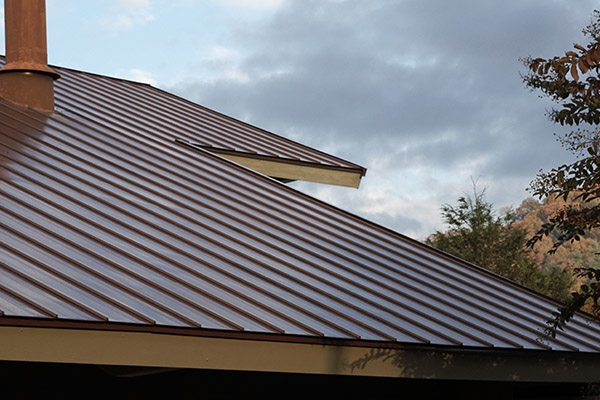No products in the cart.
Everything You Need to Know About Roofing Underlayment For Metal Roofing

Metal roofs are becoming an increasingly popular choice for homeowners and businesses alike. They offer a variety of benefits, such as durability, longevity, and energy efficiency. However, in order to get the most out of your metal roofing system, it is important to use a high-quality roof underlayment.
In this blog post, we will discuss what roof underlayment is and why it is so important for metal roofs. We will also compare the most common types of underlayment available and help you choose the right one for your specific project.
If you just started a roofing company in 2022, you'll need to brush up on your roofing underlayment knowledge to succeed in the industry.
Roofing Underlayment Explained
So, what is roof underlayment? Roof underlayment is a water-resistant material that is installed directly underneath the roofing and attached to the roof deck. It acts as a barrier between the roofing and the deck, protecting against wind-driven rain, snow, and ice dams. In addition, it provides an extra layer of protection in the event that the metal roof panels or other roofing materials are damaged.
Read more: How to Attach Metal Roof Panels: The Step-by-Step Guide
Why is a Metal Roofing Underlayment Essential?
Now that you know what roof underlayment is, you may be wondering why it is so important for metal roofs. There are actually several reasons why an underlayment is essential for metal roofs:
An underlayment helps to seal the gaps between the roof panels and the roof decking, preventing water from leaking into the home. Without underlayment acting as a water shield, your building is at risk for costly water damage that requires more than just a roof replacement.
Metal roofs can be quite noisy, especially during inclement weather like hail or heavy rain. An underlayment helps to reduce the amount of noise that is transmitted into the home, making it more comfortable and quiet for residents. Think of it as an extra layer of padding that makes the home nice and cozy.
Metal roofs expand and contract as the temperature changes. Without an underlayment, this movement can cause the roof panels to become dislodged or damaged in a low or high-temperature environment. Underlayment provides a flexible surface that allows the metal roofing to move without being damaged.
In order to properly install metal roofing, it is important to have a smooth, level surface. An underlayment helps to create this surface, making the installation process easier and ensuring that the roof is installed correctly.
In many areas, building codes require the use of underlayment beneath metal roofs. This is due to the fact that underlayment provides additional protection against wind and weather damage.
Choosing the Right Type of Metal Roof Underlayment
Now that you know why it is so important to use underlayment for metal roofs, let's get into which type of underlayment is right for your standing seam metal roof project. There are three main types of roofing underlayment: felt/tar paper, synthetic sheet, and self-adhering membrane.
Felt/tar paper is the most common type of underlayment. It is made of organic materials, such as wood fibers or paper, that are saturated with bitumen. Felt or tar paper is durable and easy to install, making it a good choice for most metal roofing projects.
Synthetic underlayments are made of man-made materials, such as polypropylene or polyester. It is lightweight and easy to install, making it a good choice for do-it-yourself projects. Synthetic underlayments are also more resistant to mold and mildew than felt/tar paper.
Self-adhering membrane underlayment is made of rubberized asphalt that is backed with a layer of adhesive. It is one of the most expensive types of underlayment, but it is also the easiest to install. Self-adhering membrane underlayment is also very resistant to wind and weather damage.
Metal roof underlayment is an essential part of any metal roofing system. It provides several benefits, including improved waterproofing, noise reduction, and thermal protection. It is also required by local building codes in many areas. When choosing an underlayment for your project, be sure to select the type that is best suited for your specific needs.
Do you have any questions about choosing the right underlayment for your standing seam metal roof system? Our team at AMSI are professionals in guidance on all things metal roofing materials. Contact us for more guidance on the right material for your building.
For more roofing industry support, check out our blog. We have articles like How to Run a Successful Roofing Company to help your business grow and scale with insider tips.